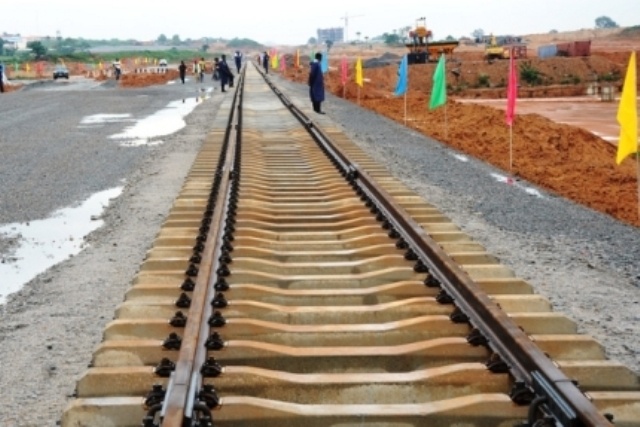Lagos to begin $3bn Green Line rail construction in December
The Lagos State Government has announced that construction work on the $3 billion Green Line Rail project, which will connect Marina to the Lekki corridor, will officially begin in December 2025.
This was confirmed by the Lagos State Commissioner for Transportation, Oluwaseun Osiyemi, in a statement shared on the official X account of the Lagos State Government on Monday.
According to Osiyemi, the project is one of the most ambitious transport initiatives in the state’s history and will be implemented in phases over a period of two to three years. The first phase will run from the Lekki First Tollgate to Epe, while the second phase will extend from Marina, including a section that will run partly on water.
He explained that the government had completed extensive feasibility studies and held several meetings with residents, traditional rulers, and business owners along the Lekki-Epe corridor to minimize disruption once construction begins.
“The government has carried out wide stakeholder engagements and feasibility studies along the Lekki-Epe Expressway corridor because the Green Line project will commence in December,” Osiyemi said. “It will take about two to three years and will come in phases, beginning from Marina to Epe. The first phase runs from the Lekki First Tollgate to Epe, and the second phase, starting from Marina, will be on the water.”
The announcement comes as the state government intensifies enforcement activities along the Lekki-Epe Expressway to clear encroachments and restore wetlands that form part of the project’s right-of-way. Authorities have also begun relocating roadside traders, removing illegal structures, and improving drainage channels in preparation for the rail line.
The Green Line is designed to ease traffic congestion on the ever-busy Lekki-Epe corridor, one of the fastest-growing urban areas in Lagos. The area has witnessed massive expansion due to new residential estates, shopping malls, and major investments such as the Lekki Free Trade Zone, Dangote Refinery, and the Lekki Deep Sea Port.
The 70-kilometre Green Line will run from Marina on Lagos Island to the Lekki Free Trade Zone, featuring 17 stations spread across a combination of elevated and ground-level tracks. The route will pass through Victoria Island, Lekki, Ajah, Sangotedo, and Epe, linking major residential and commercial areas.
Each station will feature modern designs with pedestrian bridges, elevators, escalators, and ticketing systems similar to those on the Blue Line and Red Line rail projects. A major depot will be built near Sangotedo to house and maintain trains, while a 15-hectare parking area is planned near the Lekki Free Zone to support park-and-ride commuters.
Trains on the Green Line are expected to run in eight-car B-type sets, reaching speeds of up to 100 kilometres per hour, with a minimum waiting time of three minutes between trains. The line is projected to carry up to 35,000 passengers per hour in each direction, significantly cutting travel time between Marina and Epe to under one hour.
The Green Line project is estimated to cost about $3 billion (roughly ₦4.5 trillion at current exchange rates). According to reports, the Federal Government has committed ₦146.14 billion as part of its counterpart funding in the 2025 budget.
A tripartite agreement has also been signed with the China Harbour Engineering Company (CHEC) to design, finance, construct, and operate the line under a public-private partnership model.
On April 9, 2025, the Lagos Metropolitan Area Transport Authority (LAMATA) released a detailed video presentation outlining the project’s design, alignments, and financing structure. The presentation confirmed that construction will be handled by CHEC, while LAMATA will oversee operations once the project is completed.
Transport experts and urban planners have welcomed the project but raised concerns about some aspects of the design, especially the spacing between stations. Some analysts believe that the long gaps between stops in areas like Victoria Island and Lekki Phase 1 could limit access for commuters and reduce ridership.
They also questioned whether the eight-car train configuration would be enough to meet long-term passenger demand given the rapid population growth in the Lekki axis. Experts have recommended adding more stations in densely populated areas and integrating the Green Line with other existing or planned rail lines to ensure smooth connections.
For many residents of the Lekki-Epe corridor, the Green Line project offers hope for a long-awaited solution to daily traffic gridlock. Commuters currently spend up to four hours traveling between Lekki and Lagos Island during peak hours.
However, there are also concerns about potential disruptions during the construction phase, particularly regarding road diversions, noise, and property displacement. The state government has promised to provide timely information, compensate affected residents, and minimize the impact on daily life.
The Commissioner assured Lagosians that the government’s priority is to provide a reliable, efficient, and affordable transportation system that meets the needs of a growing city.
“The Green Line project is not just about transportation,” Osiyemi said. “It’s about improving the quality of life, attracting investments, and creating jobs. It will open up new economic opportunities across the Lekki-Epe corridor and beyond.”
The Green Line is part of the broader Lagos Rail Mass Transit (LRMT) network, which includes the already operational Blue Line and the ongoing Red Line project. The long-term plan envisions six major rail lines across Lagos, forming the backbone of an integrated public transportation system that combines trains, BRT buses, and ferries.

